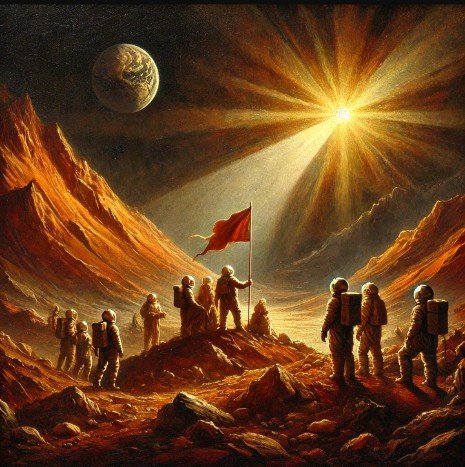
From the surface of Mars, Earth looks like a small star shining brightly in the night sky. Seen as a pale blue dot among a sea of stars, Earth shows its own beauty and uniqueness. Its great distance makes it seem as if it is in a vast and unreachable corner of the universe, emitting a soft blue glow due to the reflection of sunlight from the vast ocean and the atmosphere that surrounds it.
When viewed through a telescope, Earth shows its round shape more clearly. The dominant blue color is interspersed with white streaks of clouds and polar ice, and brown and green spots that indicate land. Earth looks small, but full of detail, a living planet in the middle of a cold void. The moon, its natural satellite, appears as a small gray dot orbiting it, as if faithfully accompanying it on its long journey around the sun.
This view reminds us how fragile and precious Earth is in the vastness of the universe. From Mars, Earth no longer looks like a large and dominant planet, but rather a small home for life among other uninhabited planets. Its simple beauty invites feelings of awe and humility, reminding humans of our limitations and responsibility to care for the only planet we call home.
Great post. I wonder if Earth is the only cradle of life in the universe.
It is debatable, but not impossible. Therefore our role may be in spreading life across space. Not destroying it everywhere we put our foot on.
If you are interested in what happens in Solar system, you may check out this book as well: https://a.co/d/5MEi5lJ
Downvoting a post can decrease pending rewards and make it less visible. Common reasons:
Submit